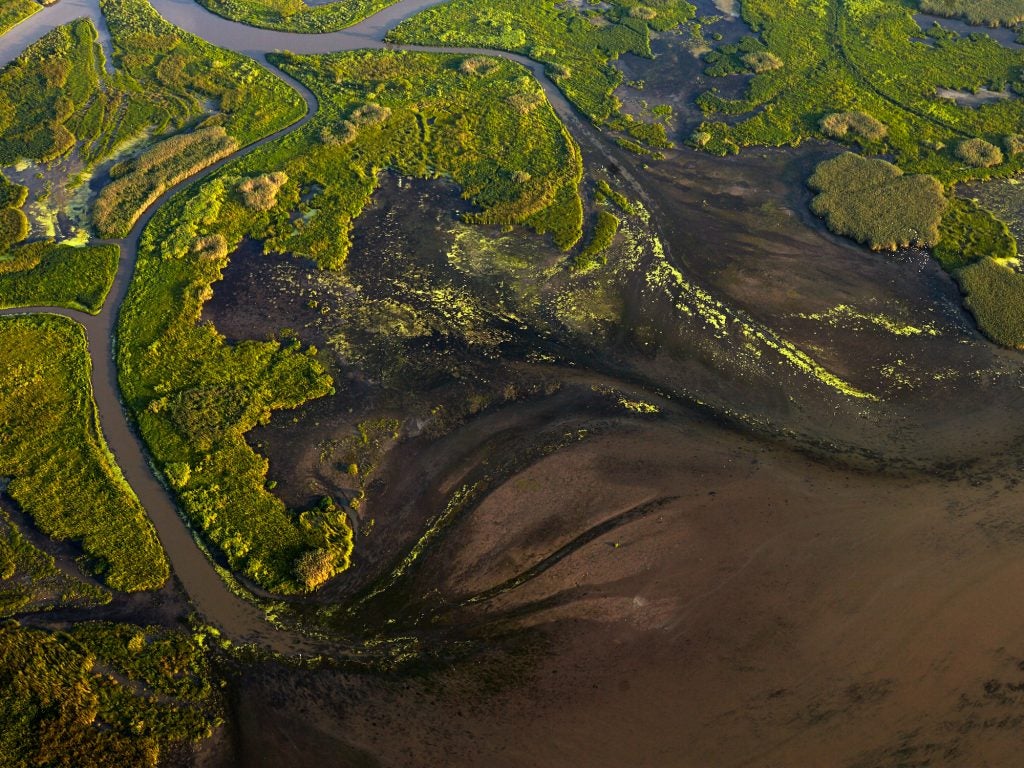In the wake of the $1.9 trillion American Rescue Plan Act, President Biden’s administration has turned its sights from rescue to resilience in the newly announced American Jobs Plan that would invest $650 billion in rebuilding infrastructure nationwide.
This proposed legislation is intended not only to mitigate significant and structural economic challenges, but also to repair and strengthen the systems on which we depend. This includes natural infrastructure to make our communities and ecosystems more climate resilient.
On our coasts, revitalizing our economy must include building long-term resilience to climate change, sea level rise and hurricanes. In Louisiana, we already know exactly the kind of projects that the American Jobs Plan should support.
Drawing inspiration from this large-scale restoration project
Louisiana loses on average a football field of coastal wetlands every 100 minutes. This land loss crisis coupled with sea level rise and stronger hurricanes pose an existential threat. Entire communities are at risk of displacement, and we risk the complete collapse of the Mississippi River Delta, an ecological treasure and economic engine.
To address climate threats on this scale, the state is embarking on the largest individual ecosystem restoration project in U.S. history, called the Mid-Barataria Sediment Diversion, which recently crossed a major milestone with the release of a draft environmental impact statement by the U.S. Army Corps of Engineers.
Barataria Basin, where the project is located, is experiencing one of the highest rates of land loss on the planet. This innovative project will harness the Mississippi River’s naturally occurring sediment to rebuild degrading wetlands that buffer New Orleans and southeast Louisiana from coastal flooding.
The diversion is the signature project of Louisiana’s plans to re-engage the Mississippi River in the protection of our fragile coast and communities, and in support of our fisheries, wildlife habitat and abundant natural resources. It’s the only project on a scale large enough to tackle the combined land loss plus sea level rise crisis Louisiana faces.

Sediment from the the Mississippi River is deposited into the wetlands at Fort St. Philip. Sediment from the river slows wetland loss by continuously rebuilding the land. The construction of several large river sediment diversions to slow wetland loss are planned. [Photo by Ben Depp 07/06/2014]
The project will result in a whopping $1.4 billion regional investment through funds allocated by the Deepwater Horizon oil spill settlement. Plaquemines Parish, where the project will be constructed, and the surrounding region will experience a significant positive economic boost, increasing household earnings by as much as $648 million annually, supporting 12,400 additional jobs and increasing sales to regional businesses by nearly $1.5 billion.
That means more workforce development for the region and more local jobs for our growing coastal restoration industry. These new jobs and industries offer hope for those who will need new opportunities as historic industries falter or climate change causes greater disruption.
Adapting to an already-changing coast and climate will at times be a challenging and painful process. But projects like the Mid-Barataria Sediment Diversion are exactly the kind of investments needed to build long-term climate resilience while supporting local and regional economic development.
Projects like the Mid-Barataria Sediment Diversion are exactly the kind of investments needed to build long-term climate resilience while supporting local and regional economic development. Share on X
Providing a global model for climate adaptation
Equally as important to the what is the how. Here, too, the diversion offers a useful blueprint: because construction of the sediment diversion is expected to cause near-term disruption to some species and industries, it’s essential to have plans in place to support the communities, industries and species impacted.
Louisiana’s state agencies have recognized this and unveiled a suite of stewardship and mitigation strategies to outline how they plan to do that. Inaction is not an option. However, when it comes to adapting to climate change, we cannot leave anyone behind — that’s acutely true in coastal Louisiana, and it will be true for communities around the country that navigate these same issues in the years ahead.
Moreover, the Mid-Barataria Sediment Diversion is designed to be adaptable to changes that may occur over time, aided by Louisiana’s world-class coastal monitoring systems. This will provide scientists and planners with extensive, near-real-time data that they can use to adjust project operations to respond to a changing coast and climate.
The project’s focus on using natural forces and on adaptive management can serve as a model for other states looking to tackle climate change head-on. Future federal legislation — including the American Jobs Plan — should prioritize these kinds of investments.
I’m hopeful that with continued support for projects like these, we can revitalize local economies and get people back to work while also building lasting climate resilience.









